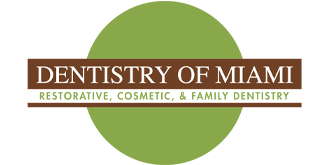There’s a rising trend of people checking out mail-order orthodontics and DIY braces. If both sound risky or even dangerous, you’re not wrong. Aside from financial concerns, the biggest reason patients are considering these options is a lack of understanding. There’s a significant degree of planning that goes into developing an orthodontic care plan. Aside from simply knowing how to set the braces or select the aligners correctly, other considerations are involved. Among them is ensuring that only the teeth you want to move. Without anchoring the teeth that should remain in place, there’s a risk that they’ll shift out of position. The results can create undesirable results or even create oral health complications. Orthodontic anchorage is essential to getting the job done safely.
How Orthodontic Anchorage Works In Treatment
When orthodontic anchorages were first developed, Henry Albert Baker led the charge. Baker’s anchorage set such a precedent that it continues to be used to this day. Since Baker developed that first anchorage, new forms have come to pass. Orthodontists created each of them to address new concerns and orthodontic issues. A classification system came to describe each anchorage and why they are used.
- Site-Based Classification
- Intraoral – A form of anchorage that is set inside the mouth.
- Extraoral – Reliant on headgear and face masks; these anchorages are set outside the mouth. They come in occipital, cervical, and combination designs of headgear.
- Muscular – Anchorages that are set within the muscles.
- Number of Treated Teeth
- Simple/Primary – Anchorages affecting only one tooth.
- Compound – Anchorages affecting multiple teeth
- Reinforced – When other forms of anchorage, or other teeth, are used to secure an anchorage in place, it’s called reinforced. This form of anchorage often involves muscular or extraoral anchorages.
- Reciprocal – Two teeth that need to be adjusted towards each other by an equal amount receive a reciprocal anchorage.
- Stationary – A stationary anchorage is used when a tooth’s position needs to be changed, but not its angle.
- Space-Based Classification
- Group A – Used to draw anterior (front) teeth towards the posterior(back) of the mouth.
- Group B – Used to equally move posterior and anterior teeth towards each other.
- Group C – When posterior teeth need to move towards the anterior.
- Absolute Anchorage – All other groups involve moving some posterior and anterior teeth. Absolute anchorages move only anterior teeth.
Each of these classifications describes common and frequently referenced anchorages. Two other forms of classification also exist. These involve the use of implants as anchorages and certain bones as anchor points. Regardless of the form of anchorage, there is one goal. Prevent the movement of teeth that should remain in place during orthodontic treatment.
Consult A Specialist For Orthodontic Care
The most important thing to take away from the above is understanding the many factors involved in orthodontic treatment. DIY braces and mail-in orthodontics present many risks to the end-user. To make certain that you get the results that you want safely, consult with a local orthodontist. They’ll be able to produce a treatment plan that will get results without the risk of incident.


